Friday, 17 December 2010
Tuesday, 14 December 2010
Time management
To manage our timing and deadlines we have created a 'google calendar' so it layouts out clearly what days we will be preparing for our film or filming etc.
Planning: Storyboard
We decided that Colette's drawing of our storyboard was more effective as an animatic as it demonstrated in a more creative way what our sequence will look like. Although ideally, our sequence we will be longer than 19 seconds.
Organisation: Location
We have decided that 'Martley Quarry' would be perfect for our opening sequence as it has and interesting and spooky to look to it which is what we were looking for. It will also make our sequence more effective as it is a beautiful location.
Organisation: Costume
The characters will not be limited to any certain type of clothing. Everyday casual clothing will be perfect (as long as it is warm, to show how cold it is in the quarry, and add to the atmosphere) the woman should be wearing trainers, to add to the "normal" view of her. And also so she can run without hurting herself.
The man who will appear in it should be wearing dark coloured clothing to make him more creepy.
The man who will appear in it should be wearing dark coloured clothing to make him more creepy.
Organisation: Props
For our opening sequence we need to consider what props we will be using. The props are -
- Spade - Colette
- Letter - Me (Emma)
- Music box (Jewellery box) - Dom
- Car - Dom
- Spade - Colette
- Letter - Me (Emma)
- Music box (Jewellery box) - Dom
- Car - Dom
Risk Assessment December 2010
For our media product, we will be filming our opening sequence at Martley quarry. There are different risks that we will need to take into consideration when filming at this location.
- Making sure that the camera and the box are not in the way at anytime to prevent students from falling over. - Making sure that students stay away from the water as there is water at our location.
- If there is still snow on the ground we need to make sure that students have the right foot wear on.
- Make sure that students are wearing a seatbelt when travelling to our location.
- When walking up a road make sure that students are in single file, and they are aware of surroundings e.g. cars
- Do not leave equipment in road.
- When the filming is taking place of the car make sure that students are stood well away at all times.
- Making sure that the camera and the box are not in the way at anytime to prevent students from falling over. - Making sure that students stay away from the water as there is water at our location.
- If there is still snow on the ground we need to make sure that students have the right foot wear on.
- Make sure that students are wearing a seatbelt when travelling to our location.
- When walking up a road make sure that students are in single file, and they are aware of surroundings e.g. cars
- Do not leave equipment in road.
- When the filming is taking place of the car make sure that students are stood well away at all times.
Planning: Animatic
This is our animated storyboard. It shows what we want our opening to look like.
Obviously this sequence is only 19 seconds long, in our actual opening it will be made longer by a longer shot of her driving, and digging. So our actual opening will not be 19 seconds long, it will be the full 2 minutes.
Obviously this sequence is only 19 seconds long, in our actual opening it will be made longer by a longer shot of her driving, and digging. So our actual opening will not be 19 seconds long, it will be the full 2 minutes.
Monday, 13 December 2010
Planning: Music
In todays lesson we were looking at soundtracks that we could use for our opening sequence- we liked the sound of old jewellery box's as they give a creepy feel. We found some videos off youtube, here are the links -
Planning: Video camera
Today I brought in my own video camera to see if it is compatible to the college computer and luckily it is. So we will be using my camera :)
Tuesday, 7 December 2010
Time management: Update
Tomorrow we have arranged to go and look at our potential location for our opening sequence- Martley Quarry
Planning: Shot Lists
Shot 1: Establishing shot of location (Quarry)
Shot 2: Medium close up of girl reading letter from a side angle eventually zooming into her face
Shot 3: Hand-held camera in car focusing on her driving
Shot 4: Long shot of car pulling up
Shot 5: Long shot of the girl walking towards the quarry, showing her and the location
Shot 6: Close up of 'Danger' sign covered in leaves etc
Shot 7: Tracking shot of girl walking towards gate and climbing over it to enter the Quarry
Shot 8: Long shot of girl shown walking around the quarry
Shot 9: Close up of girl digging focusing on the hole and shovel
Shot 10: Extreme close up of girls eye as she hears rustling noises
Shot 11: Long shot & Shallow depth of field of silhouette of man in background
Shot 12: Extreme close up of girls eye as she begins to cry in fear
Shot 13: Medium long shot of girl throwing shovel down, beginning to run
Shot 14: Fast paced jump cuts of girl running showing her feet & face
Shot 15: Close up of her falling over showing her head hit the ground
Shot 16: Camera zooms into her eye as the titles fade onto the screen
Shot 2: Medium close up of girl reading letter from a side angle eventually zooming into her face
Shot 3: Hand-held camera in car focusing on her driving
Shot 4: Long shot of car pulling up
Shot 5: Long shot of the girl walking towards the quarry, showing her and the location
Shot 6: Close up of 'Danger' sign covered in leaves etc
Shot 7: Tracking shot of girl walking towards gate and climbing over it to enter the Quarry
Shot 8: Long shot of girl shown walking around the quarry
Shot 9: Close up of girl digging focusing on the hole and shovel
Shot 10: Extreme close up of girls eye as she hears rustling noises
Shot 11: Long shot & Shallow depth of field of silhouette of man in background
Shot 12: Extreme close up of girls eye as she begins to cry in fear
Shot 13: Medium long shot of girl throwing shovel down, beginning to run
Shot 14: Fast paced jump cuts of girl running showing her feet & face
Shot 15: Close up of her falling over showing her head hit the ground
Shot 16: Camera zooms into her eye as the titles fade onto the screen
Synopsis
Our opening would start with an establishing shot of our location, the camera would pan over the trees, and will focus on a keep out sign, using shallow depth of field to give it a creepy feel. After the establishing shot we will try to use a number of jump cuts of close ups of a woman running, making it look panicked and adds an enigma code. The camera would then go to a different part of the location showing another figure stood at the top of the cliff looking lost. The camera would flick twice from the figure looking lost to the jump cuts of the woman shouting his name, giving a sense of two different feels from two different people.
It flashes back to earlier that day showing them camping, and how happy they are. But while we see this we are hearing the noises happening in the future, of the woman running and screaming. We hear one blood curdling scream in the open with the camera on the floor and a body falls in front of the camera, and the title fades in on the screen in the woman's dead eye.
It flashes back to earlier that day showing them camping, and how happy they are. But while we see this we are hearing the noises happening in the future, of the woman running and screaming. We hear one blood curdling scream in the open with the camera on the floor and a body falls in front of the camera, and the title fades in on the screen in the woman's dead eye.
Monday, 6 December 2010
Film Openings:Genre Specific Analysis
What do the titles tend to look like?
 The 2 films that I researched for the genre analysis had quite strong titles which clearly outlined what genre the film was. One title that particularly interested me was the 'House of Wax' title as I thought it being made out of wax made it interesting as it clearly relates to the film and gave it that 'spooky' feel to the opening.
The 2 films that I researched for the genre analysis had quite strong titles which clearly outlined what genre the film was. One title that particularly interested me was the 'House of Wax' title as I thought it being made out of wax made it interesting as it clearly relates to the film and gave it that 'spooky' feel to the opening.
What kind of music and/or other non-diegetic sounds are used?
The non-diegetic sound to the 2 openings easily connoted the 'Thriller' genre as it gave it a dramatic feel to it and also created suspense. The music that was used in both films was genuinely opera sounding with instruments such as the violin to create tension.
What types of character do we see in the opening sequences?
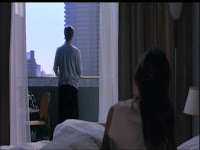 The characters in 'House of Wax' and 'The Grudge' are seen to be anonymous and disturbed people by the use of mise-en-scene in 'House of Wax' as the wax pot being in the kitchen in the morning and in 'The Grudge' the use of a normal morning routine being disrupted by drama connotes that the character was distracted and trapped- illustrating Barts Enigma Code.
The characters in 'House of Wax' and 'The Grudge' are seen to be anonymous and disturbed people by the use of mise-en-scene in 'House of Wax' as the wax pot being in the kitchen in the morning and in 'The Grudge' the use of a normal morning routine being disrupted by drama connotes that the character was distracted and trapped- illustrating Barts Enigma Code.
What kinds of mise-en-scene dominate? What are typical features of setting, lighting, props?
The mise-en-scene made the opening sequence in 'House of Wax' interesting as it was set in 1974 and demonstrated what their lifetstyles were like. In 'The grudge' the lighting was strong as it highlighted the man on the background whilst the woman was slightly darker in the background connoting which character was dominate in this opening sequence.
What narrative codes are employed and how?
The narrative codes in both sequences connote Barts Enigma code as the viewers are thrown into a persons morning routine being disrupted but also having a reason behind it eg the man committing suicide in 'The Grudge' and the woman in 'House of Wax' hitting her distressed child.
Is there a particular form of cinematography or editing that is specific to the genre you're working in?
The use of editing in both of these sequences start off by using slow tracking cameras focusing on the characters then eventually the edits begin to show face paced jump cuts to create tension to add to the genre of 'Thriller' by demonstrating drama.
 The 2 films that I researched for the genre analysis had quite strong titles which clearly outlined what genre the film was. One title that particularly interested me was the 'House of Wax' title as I thought it being made out of wax made it interesting as it clearly relates to the film and gave it that 'spooky' feel to the opening.
The 2 films that I researched for the genre analysis had quite strong titles which clearly outlined what genre the film was. One title that particularly interested me was the 'House of Wax' title as I thought it being made out of wax made it interesting as it clearly relates to the film and gave it that 'spooky' feel to the opening.What kind of music and/or other non-diegetic sounds are used?
The non-diegetic sound to the 2 openings easily connoted the 'Thriller' genre as it gave it a dramatic feel to it and also created suspense. The music that was used in both films was genuinely opera sounding with instruments such as the violin to create tension.
What types of character do we see in the opening sequences?
 The characters in 'House of Wax' and 'The Grudge' are seen to be anonymous and disturbed people by the use of mise-en-scene in 'House of Wax' as the wax pot being in the kitchen in the morning and in 'The Grudge' the use of a normal morning routine being disrupted by drama connotes that the character was distracted and trapped- illustrating Barts Enigma Code.
The characters in 'House of Wax' and 'The Grudge' are seen to be anonymous and disturbed people by the use of mise-en-scene in 'House of Wax' as the wax pot being in the kitchen in the morning and in 'The Grudge' the use of a normal morning routine being disrupted by drama connotes that the character was distracted and trapped- illustrating Barts Enigma Code.What kinds of mise-en-scene dominate? What are typical features of setting, lighting, props?
The mise-en-scene made the opening sequence in 'House of Wax' interesting as it was set in 1974 and demonstrated what their lifetstyles were like. In 'The grudge' the lighting was strong as it highlighted the man on the background whilst the woman was slightly darker in the background connoting which character was dominate in this opening sequence.
What narrative codes are employed and how?
The narrative codes in both sequences connote Barts Enigma code as the viewers are thrown into a persons morning routine being disrupted but also having a reason behind it eg the man committing suicide in 'The Grudge' and the woman in 'House of Wax' hitting her distressed child.
Is there a particular form of cinematography or editing that is specific to the genre you're working in?
The use of editing in both of these sequences start off by using slow tracking cameras focusing on the characters then eventually the edits begin to show face paced jump cuts to create tension to add to the genre of 'Thriller' by demonstrating drama.
Wednesday, 1 December 2010
Audience Research Focus Group Meeting Analysis
After posting our genre moodboard and audience montage we managed to get some feedback from the members of the group.
For our genre moodboard we got some positive feedback from the members. They said that our moodboard relates to our genre well and also using a certain font to connote a scary look to it pulled off well. They also said that the choice of photos of popular, well known movies also helps the audience know what this particular moodboard is about.
Next was our audience montage, we managed to get a little bit of feedback for it but not as enough as we had hoped.
One piece of feedback that we got was that our montage is good but could do with a little bit more masculine things eg sport. So from that partly negative response we will aim to make it a a fair movie which demonstrates male and female gender.
After some consideration from the feedback we received we have thought that the genre that we have picked is a good genre to do as many people seem interested in it from the positive comments. We have also thought about our planning that we will be doing and now we will be considering peoples interests that our opening sequence is aimed at. After all of the research we have done we have decided that we will definably do the genre of Thriller/Horror as many people seem to enjoy watching films that are related to that genre.
For our genre moodboard we got some positive feedback from the members. They said that our moodboard relates to our genre well and also using a certain font to connote a scary look to it pulled off well. They also said that the choice of photos of popular, well known movies also helps the audience know what this particular moodboard is about.
Next was our audience montage, we managed to get a little bit of feedback for it but not as enough as we had hoped.
One piece of feedback that we got was that our montage is good but could do with a little bit more masculine things eg sport. So from that partly negative response we will aim to make it a a fair movie which demonstrates male and female gender.
After some consideration from the feedback we received we have thought that the genre that we have picked is a good genre to do as many people seem interested in it from the positive comments. We have also thought about our planning that we will be doing and now we will be considering peoples interests that our opening sequence is aimed at. After all of the research we have done we have decided that we will definably do the genre of Thriller/Horror as many people seem to enjoy watching films that are related to that genre.
Audience Focus Research Group
The next thing we did was we created an audience focus research group on 'Facebook' as we thought it would be the best way to get feedback from our friends and to get information and feedback on our genre moodboard & audience montage.
Members in the group are
Alex Lam
Nathan Grosvenor
Kym Robbins
Christopher Spencer
Target Audience
Our target audience is mixed gender, 16-19 year olds who fall into the mainstream hedonists who are C1C2s on the Jicnar scale. At first our characters would be introduced as hedonists who are out for a good time however they will also been seen as fairly intellectual who have aspirations to do well in life and aim to achieve their dream careers.
We have also created a montage to visually demonstrate what target audience we are aiming at and what their interests are so we can relate to them for our opening sequence.
We have also created a montage to visually demonstrate what target audience we are aiming at and what their interests are so we can relate to them for our opening sequence.
Film Openings: Genre Specific Analysis
As we are looking into the genre of thriller/horror I looked into the opening sequence of 'House of Wax'. It starts with non-diegetic music, preferably opera sounding which connotes an old feel to the beginning of the film. We are then shown a woman making a wax sculpture of a face in her kitchen. This could relate back to the genre as the burning wax could suggest burning blood.
The camera then shows her son eating cheerios which suggests that this is seen as a normal routine for this family. Her husband then bursts through the kitchen whilst holding one of their other sons in his arms but trying to calm him down, as he is kicking and screaming. The viewers are then shown how different this child is to the other child eating cheerios as he is forced to sit in the armchair whilst the parents strap and tape him to the handles. By introducing the characters this way it suggests to the viewers that this child is not normal and the parents use violence which the children eventually learn from.The boy becomes progressively worse and the mother slaps the boy after he has scratched her on the hand - by the use of violence from the mother to calm the child it represents residual ideology.
However, this film introduces the characters in a subtle and mysterious way as they are shown to be violent but their faces are not shown throughout the opening sequence, and if they are, they are only glimpses and are not shown for more than 2 seconds eg. when the mother gives the one son more cereal, we beliefly see her face. By using this technique it relates back to the genre as it makes the movie to be seen as mysterious and represents Barthe's Enigma Code as the viewers wonder why the one child is more disturbed than the other.
The continuity editing in this sequence is very effective as by the use of slow cinematography at the beginning raises tension and suspicion as the viewers wonder why wax is dripping down the table. There are also jump cuts of the woman stirring the wax and pouring it into the sculpture and by the close up shot of the mask and wax being poured around it makes the sculpture seem suspicious as it could have been a made up sculpture or someones actual face. By the use of props it makes this sequence more powerful as the camera mainly focuses on the objects in the room rather than the people as we are not shown any faces, this could connote that the tools and objects this woman is using could be seen as important in this movie by the way she makes the sculpture and could come up later on in the movie.
I think this sequence is very interesting as I like the way the characters are introduced in an anonymous way by only showing shots to their shoulders, not above. I also think by showing this little story at the beginning sets the plot and why the children are disturbed when they are older. After this story is told the title 'House of Wax' takes over the screen and we see these letters also made by wax and melting which could again connote melting blood.
The next opening sequence I looked at was 'The Grudge' I chose this film as it related to the genre horror/thriller. The movie opens with a description of how a curse is born, the words 'curse, death and fury' are highlighted in red which all relate to death, blood and violence which show that this movie is a horror by the use of wording and colour.
We are first shown a river by a crane camera shot which eventually shows the viewers a medium close up of a mans face. The mans then glances to the woman in the bed who has just woken up. The close up of the mans face afterwards suggests that he seems distraught and distracted by the way he is ignoring the woman. The camera then flips to the womans point of view and we slowly see the man flip himself over the balcony. By the use of no non-diegetic sound in this sequence it raises tension for the audience and suspense as they are waiting for something to happen.
The camera then flips back to the mans point of view as he is falling down the balcony and then suddenly we are shown a reaction shot of the woman as she is looking over the balcony at his bent body on the road.
By the use of this short story it demonstrates Barthe's Enigma Code as the viewers are left wondering why this man has commited suicide and why the woman was so oblivious at first and not thinking that he would throw himself over the balcony as she attempts to start conversation with him.
The camera then shows her son eating cheerios which suggests that this is seen as a normal routine for this family. Her husband then bursts through the kitchen whilst holding one of their other sons in his arms but trying to calm him down, as he is kicking and screaming. The viewers are then shown how different this child is to the other child eating cheerios as he is forced to sit in the armchair whilst the parents strap and tape him to the handles. By introducing the characters this way it suggests to the viewers that this child is not normal and the parents use violence which the children eventually learn from.The boy becomes progressively worse and the mother slaps the boy after he has scratched her on the hand - by the use of violence from the mother to calm the child it represents residual ideology.
However, this film introduces the characters in a subtle and mysterious way as they are shown to be violent but their faces are not shown throughout the opening sequence, and if they are, they are only glimpses and are not shown for more than 2 seconds eg. when the mother gives the one son more cereal, we beliefly see her face. By using this technique it relates back to the genre as it makes the movie to be seen as mysterious and represents Barthe's Enigma Code as the viewers wonder why the one child is more disturbed than the other.
The continuity editing in this sequence is very effective as by the use of slow cinematography at the beginning raises tension and suspicion as the viewers wonder why wax is dripping down the table. There are also jump cuts of the woman stirring the wax and pouring it into the sculpture and by the close up shot of the mask and wax being poured around it makes the sculpture seem suspicious as it could have been a made up sculpture or someones actual face. By the use of props it makes this sequence more powerful as the camera mainly focuses on the objects in the room rather than the people as we are not shown any faces, this could connote that the tools and objects this woman is using could be seen as important in this movie by the way she makes the sculpture and could come up later on in the movie.
I think this sequence is very interesting as I like the way the characters are introduced in an anonymous way by only showing shots to their shoulders, not above. I also think by showing this little story at the beginning sets the plot and why the children are disturbed when they are older. After this story is told the title 'House of Wax' takes over the screen and we see these letters also made by wax and melting which could again connote melting blood.
The next opening sequence I looked at was 'The Grudge' I chose this film as it related to the genre horror/thriller. The movie opens with a description of how a curse is born, the words 'curse, death and fury' are highlighted in red which all relate to death, blood and violence which show that this movie is a horror by the use of wording and colour.
We are first shown a river by a crane camera shot which eventually shows the viewers a medium close up of a mans face. The mans then glances to the woman in the bed who has just woken up. The close up of the mans face afterwards suggests that he seems distraught and distracted by the way he is ignoring the woman. The camera then flips to the womans point of view and we slowly see the man flip himself over the balcony. By the use of no non-diegetic sound in this sequence it raises tension for the audience and suspense as they are waiting for something to happen.
The camera then flips back to the mans point of view as he is falling down the balcony and then suddenly we are shown a reaction shot of the woman as she is looking over the balcony at his bent body on the road.
By the use of this short story it demonstrates Barthe's Enigma Code as the viewers are left wondering why this man has commited suicide and why the woman was so oblivious at first and not thinking that he would throw himself over the balcony as she attempts to start conversation with him.
Tuesday, 30 November 2010
Genre Moodboard
A moodboard is a collage of images,fonts,words,films,costumes,locations etc. They are used to display a type of genre and what is related to that particular genre. We created a moodboard to display what we considered to be related with our genre- Thriller. We've already uploaded our moodboard onto a group on facebook to get feedback from our target audience.
Monday, 29 November 2010
First Ideas
For our opening sequence of a film we have decided to work with the genre of Thriller. Our target audience is 16-19 year old's as it will be easier to relate to them. I will be working with Colette & Dom.
Wednesday, 24 November 2010
From Script to Screen: How does the credit sequence from Dexter work?
The opening sequence of Dexter shows in detail a normal morning routine that a man performs everyday. However, in this sequence it is filmed differently to show what kind of a person this man is through the use of violence.
The creator Eric Anderson got his ideas from re-contextualising mundane things and giving them a sinister importance. He started his ideas from noticing the name 'Dexter' looks the same if it is turned around, this gave him an idea that a person could have two sides to them. He then looked at crime scene photography and realised that the photographs contextualise mundane things and got the idea that a entire situation can unfold from one photo giving it an importance, once the history is discovered behind it eg. the Martin Luther King photo - where he was shot.
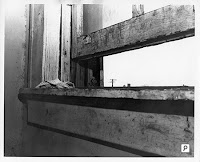 To fit this sequence Eric needed a character which introduced two sides to him, showing a man doing normal things in the morning but doing them in a brutal, harsh way to create a side of violence. The final sequence that Eric chose communicated the idea of 2 sides of this character in this sequence as the use of noir lighting and shadow depth of field helped to add a certain atmosphere to the piece. By Eric showing the detail by using shadow depth of field it made the viewers see 'normal' things as violent by the use of diegetic sound and jump cuts.
To fit this sequence Eric needed a character which introduced two sides to him, showing a man doing normal things in the morning but doing them in a brutal, harsh way to create a side of violence. The final sequence that Eric chose communicated the idea of 2 sides of this character in this sequence as the use of noir lighting and shadow depth of field helped to add a certain atmosphere to the piece. By Eric showing the detail by using shadow depth of field it made the viewers see 'normal' things as violent by the use of diegetic sound and jump cuts.
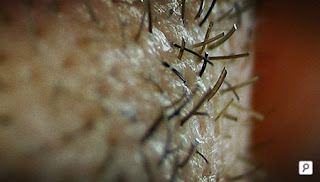 There are 2 trailers for this sequence. Eric decided to chose the one over the Xploding Plastix track. He did this because the first trailer had sinister music along with fast paced edits to connote tension, but the other creators thought that this clip gave too much away to the viewers rather than leaving a mystery - Bart's enigma code. The final sequence that he decided to select had a more playful soundtrack throughout it -the 'Rolfe Kent' track. By the use of this track it connoted tension but in a more mysterious way and set the clip to have a more humorous light whilst introducing subtly that this character could have a violent side to him.
There are 2 trailers for this sequence. Eric decided to chose the one over the Xploding Plastix track. He did this because the first trailer had sinister music along with fast paced edits to connote tension, but the other creators thought that this clip gave too much away to the viewers rather than leaving a mystery - Bart's enigma code. The final sequence that he decided to select had a more playful soundtrack throughout it -the 'Rolfe Kent' track. By the use of this track it connoted tension but in a more mysterious way and set the clip to have a more humorous light whilst introducing subtly that this character could have a violent side to him.
The creator Eric Anderson got his ideas from re-contextualising mundane things and giving them a sinister importance. He started his ideas from noticing the name 'Dexter' looks the same if it is turned around, this gave him an idea that a person could have two sides to them. He then looked at crime scene photography and realised that the photographs contextualise mundane things and got the idea that a entire situation can unfold from one photo giving it an importance, once the history is discovered behind it eg. the Martin Luther King photo - where he was shot.
 To fit this sequence Eric needed a character which introduced two sides to him, showing a man doing normal things in the morning but doing them in a brutal, harsh way to create a side of violence. The final sequence that Eric chose communicated the idea of 2 sides of this character in this sequence as the use of noir lighting and shadow depth of field helped to add a certain atmosphere to the piece. By Eric showing the detail by using shadow depth of field it made the viewers see 'normal' things as violent by the use of diegetic sound and jump cuts.
To fit this sequence Eric needed a character which introduced two sides to him, showing a man doing normal things in the morning but doing them in a brutal, harsh way to create a side of violence. The final sequence that Eric chose communicated the idea of 2 sides of this character in this sequence as the use of noir lighting and shadow depth of field helped to add a certain atmosphere to the piece. By Eric showing the detail by using shadow depth of field it made the viewers see 'normal' things as violent by the use of diegetic sound and jump cuts. There are 2 trailers for this sequence. Eric decided to chose the one over the Xploding Plastix track. He did this because the first trailer had sinister music along with fast paced edits to connote tension, but the other creators thought that this clip gave too much away to the viewers rather than leaving a mystery - Bart's enigma code. The final sequence that he decided to select had a more playful soundtrack throughout it -the 'Rolfe Kent' track. By the use of this track it connoted tension but in a more mysterious way and set the clip to have a more humorous light whilst introducing subtly that this character could have a violent side to him.
There are 2 trailers for this sequence. Eric decided to chose the one over the Xploding Plastix track. He did this because the first trailer had sinister music along with fast paced edits to connote tension, but the other creators thought that this clip gave too much away to the viewers rather than leaving a mystery - Bart's enigma code. The final sequence that he decided to select had a more playful soundtrack throughout it -the 'Rolfe Kent' track. By the use of this track it connoted tension but in a more mysterious way and set the clip to have a more humorous light whilst introducing subtly that this character could have a violent side to him.
Research: Key Conventions
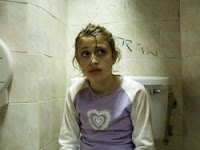 The main point of an opening to a film is to introduce the main characters/cast and crew. They also indicate what narrative is being used as an opening eg. the opening of 'Brick' sets out an enigma code as it opens with a mystery leaving the audience to wonder what has happened to these characters, the same in 'London to Brighton' as the audience are left to question what the plot is and why the characters are disrupted.
The main point of an opening to a film is to introduce the main characters/cast and crew. They also indicate what narrative is being used as an opening eg. the opening of 'Brick' sets out an enigma code as it opens with a mystery leaving the audience to wonder what has happened to these characters, the same in 'London to Brighton' as the audience are left to question what the plot is and why the characters are disrupted.  Another technique that is used in openings of films is to introduce the characters. Different films introduce characters in particular ways eg in 'Trainspotting' the characters are introduced at the beginning of the film individually in a freeze frame, which tells the audience what the character is like, such as Renton - he is introduced as daring and a rule breaker.
Another technique that is used in openings of films is to introduce the characters. Different films introduce characters in particular ways eg in 'Trainspotting' the characters are introduced at the beginning of the film individually in a freeze frame, which tells the audience what the character is like, such as Renton - he is introduced as daring and a rule breaker.Monday, 22 November 2010
Main Task
The main task is to create a opening to a film lasting a maximum of 2 minutes.
The deadlines are :
Research deadline - 01/12/10
Photo-storyboard deadline-3/12/10
Filming deadline-07/01/11
Production deadline-28/01/11
Evaluation deadline-11/02/11
The deadlines are :
Research deadline - 01/12/10
Photo-storyboard deadline-3/12/10
Filming deadline-07/01/11
Production deadline-28/01/11
Evaluation deadline-11/02/11
Friday, 15 October 2010
Targets
1) Take more care when filming
2) Make sure I save my edits in the right drive to avoid loss
3) Understand how to avoid jump cuts
2) Make sure I save my edits in the right drive to avoid loss
3) Understand how to avoid jump cuts
Monday, 11 October 2010
Preliminary Task: Evaluation
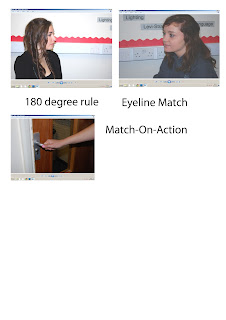 When doing the preliminary filming task I learnt about continuity editing -what it is and why it is used. It is a process of editing to make the edits as invisible as possible. Also when filming we had to consider the key rules of continuity editing-180 degree rule is when each character must stay on one part of the screen and must never appear in the same frame, match-on-action is two pieces of footage of the same event are filmed together in different ways to make them seem continuous, 30 degree rule is used to avoid jump cuts and the eye-line match is when footage is matched to the characters eye line.
When doing the preliminary filming task I learnt about continuity editing -what it is and why it is used. It is a process of editing to make the edits as invisible as possible. Also when filming we had to consider the key rules of continuity editing-180 degree rule is when each character must stay on one part of the screen and must never appear in the same frame, match-on-action is two pieces of footage of the same event are filmed together in different ways to make them seem continuous, 30 degree rule is used to avoid jump cuts and the eye-line match is when footage is matched to the characters eye line. 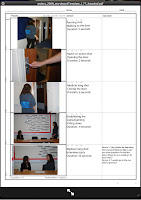
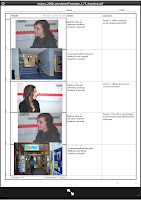 When creating the story board to illustrate the sequence of the film with different shots being used, I used a digital SLR camera to take photo's of the shots that I will be using. Using this camera was easy as I set it on 'portrait mode' to capture the main aspect of the image- the character. I learnt when using the digital SLR camera that I was fairly confident with using this technology as I have used it before and the functions I used for this task I had also used before
When creating the story board to illustrate the sequence of the film with different shots being used, I used a digital SLR camera to take photo's of the shots that I will be using. Using this camera was easy as I set it on 'portrait mode' to capture the main aspect of the image- the character. I learnt when using the digital SLR camera that I was fairly confident with using this technology as I have used it before and the functions I used for this task I had also used before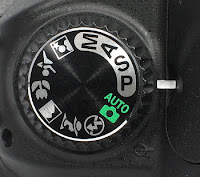 After using the digital SLR I could now create the story board using 'Adobe Photo Shop CS5'. I print screened the photos onto the program and added text to demonstrate what the shots were and what we were doing. After doing the story board we could start filming-I used a digital video camera. When using this digital video camera I found that I didn't really know how to use it at first, but once I got the hang of it after a few shots it was fairly easy to work. The functions we used on this camera were zoom and rewind.
After using the digital SLR I could now create the story board using 'Adobe Photo Shop CS5'. I print screened the photos onto the program and added text to demonstrate what the shots were and what we were doing. After doing the story board we could start filming-I used a digital video camera. When using this digital video camera I found that I didn't really know how to use it at first, but once I got the hang of it after a few shots it was fairly easy to work. The functions we used on this camera were zoom and rewind.I thought that when we filming we were fairly organised as we managed to get the filming process and beginning of the editing process in one lesson. Although I think we could of been a little bit more organised as we missed a few continuity editing shots as in one scene we accidently produced a jump cut - which we had to redo along with the match-on-action shot.
.jpeg) After finishing the filming process we uploaded the footage from the video camera using a 'firewire'. The firewire imports the footage from the camera onto the computer in a programme called 'Adobe On Location CS5' which we then record which clips we needed for our sequence. After we used the programme 'Adobe Premiere Pro' which allowed me to edit clips easily. I found this programme to be quite confusing when I first did it, but after a few attempts from having to import the same clips again due to the computer wiping them I had got used to all the tools and techniques. The tools we used were 'razor' which erased part of a clip more easily, we also 'unlinked' clips so the sound wasn't running through that clip or to import a different sound from a different clip eg talking. The difficulties with this programme and 'On Location' were we kept losing our saved video clips to import to 'Adobe Premiere pro' as we saved them in the wrong drive ( G drive) which kept wiping our saved clips so we had to keep importing the video clips onto the computer and save it to the D drive.
After finishing the filming process we uploaded the footage from the video camera using a 'firewire'. The firewire imports the footage from the camera onto the computer in a programme called 'Adobe On Location CS5' which we then record which clips we needed for our sequence. After we used the programme 'Adobe Premiere Pro' which allowed me to edit clips easily. I found this programme to be quite confusing when I first did it, but after a few attempts from having to import the same clips again due to the computer wiping them I had got used to all the tools and techniques. The tools we used were 'razor' which erased part of a clip more easily, we also 'unlinked' clips so the sound wasn't running through that clip or to import a different sound from a different clip eg talking. The difficulties with this programme and 'On Location' were we kept losing our saved video clips to import to 'Adobe Premiere pro' as we saved them in the wrong drive ( G drive) which kept wiping our saved clips so we had to keep importing the video clips onto the computer and save it to the D drive.We each imported our video onto our own blogs using 'Youtube'. We did this by creating a Youtube account and uploaded our video onto there- which wasn't a problem. To get the video onto our blog all we had to do was copy and paste the Youtube URL onto our post and it uploaded. Using Blogger made it more easier to set out my work neatly and helped me organise it better. Overall I found this Preliminary Task quite frustrating at points when we lost our clips but I did enjoy the filming and editing part once I got used to it.
Friday, 8 October 2010
Post-Production
The editing process went well at the beginning, although we noticed when editing that we had a jump cut and also needed to zoom into the match-on-action shot - so we will need to include that to our original film when we have re done those 2 clips. We also had to re do our editing because the software we used didn't save it properly. But overall the editing was found to be relatively easy once we got the hang of it.
Monday, 4 October 2010
Production
The filming process went well, we managed to film and start the editing within one lesson. Although we had re-do a few takes due to people walking past the camera. Overall, we managed to finish filming but we also have a few jump cuts that we will need to do again and add into the original film.
Pre-Production Task
Before we started filming we had to create a story board showing what our film involved and the different shots we will be using. We also had to do a risk assessment to assess the possible hazards of where we will be filming, this was to assure everything was safe. Also had to scout locations and ask permission to use the locations for our mini film.
Friday, 24 September 2010
Continuity Editing
Continuity editing is a style of film editing. The goal of this editing technique is to make the editing as invisible as possible.It is used to make the viewers get carried away within the story and to make them forget they are watching a film, tv etc. The main elements of continuity editing is '180 degree rule' - 2 characters facing each other, they must never appear on the same half of the screen otherwise the continuity of the scene will be broken. The next technique is 'match on action' cut - two pieces of footage filmed in different ways but edited together to seem continuous. Another rule is the '30 degree rule'- changing the angle of the camera to avoid a jump cut. 'Eyeline match' is another editing technique - footage is matched to each eye lines of the characters. The last element of editing is 'establishing a scene' which demonstrates an audiences understanding of a scene.
Wednesday, 22 September 2010
Preliminary Task - Video Production
This exercise involves filming and editing a character crossing a room, opening a door and also sitting down opposite another character which they exchange a few lines of dialogue to. The Preliminary Task demonstrates match on action, shot reverse shot and also the 180 degree rule.
Welcome :)
Hey! Welcome to my AS Media Blog, I will be using this blog to provide updates for my practical work throughout the year :)
Subscribe to:
Comments (Atom)


















